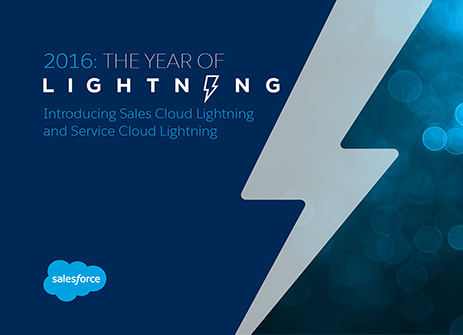Forex Trading
advantages and disadvantages of break even analysis: What Is Break-Even Analysis and How to Calculate It for Your Business
Содержание

Sales values at various levels of output are plotted, joined and the resultant line is the sales line. Returning to the example above, the contribution margin ratio is 40% ($40 contribution margin per item divided by $100 sale price per item). Therefore, the break-even point in sales dollars is $50,000 ($20,000 total fixed costs divided by 40%). Confirm this figured by multiplying the break-even in units by the sale price ($100), which equals $50,000.
Sales income and variable expenses do not grow in lockstep with the production value. They are less proportional than they should be at greater levels of output. This is due to trade discounts, bulk buying economies, concessions for bigger sales, and so on.
Break-even analysisindicates how many units the firm has to produce and sell before it recovers its total costs. A fixed cost is a cost that does not vary with the level of production or sales. In the break-even chart, both total cost line and the sales line look straight lines. Since the assumptions does not hold good, these lines have not been drawn in straight lines in practice. It leads to several break-even points at different levels of activity.
- Likewise, the variable costs do not vary in direct proportion of the level of operation if the law of diminishing or increasing return is applicable in the business.
- A break-even analysis may also be a useful tool for determining precise sales goals for your team.
- A break-even analysis is a useful tool for determining at what point your company, or a new product or service, will be profitable.
- Break-even analysis implies that at some point in the operations, total revenue equals total cost — the break-even point.
- Don’t let your passion for the business idea or new product cause you to lose sight of that basic truth.
These costs start as soon as you set up your business or production unit. These costs remain the same, whether your business is growing or going backward. However, your long-term fixed costs change when you decide to expand your business. Do you think people who start these companies work on a hunch?
Break Even Analysis – Definition, Formula, Examples
Production managers and executives have to be keenly conscious of their level of sales and the way close they’re to overlaying mounted and variable prices always. Calculating the breakeven point is a key monetary analysis tool used by business house owners. Small enterprise owners can use the calculation to determine how many product items they need to promote at a given value pointto break even. They can also change the variable prices for each unit by including more automation to the production process. A break-even analysis is a useful tool for determining at what point your company, or a new product or service, will be profitable.

On the X-axis of the graph is plotted the number of units produced, sold and on the Y-axis are shown costs and sales revenues. For example, as output rises, the business may benefit from being able to buy inputs at lower prices , which would reduce variable cost per unit. Break Even point is useful to estimate the time of projected the cost of production and sales. In a Break Even point the total sales are equal to the total cost including interest and amortization of long term finance.
Breakeven Pricing – Meaning, Importance, Advantages, and More
Some company concepts aren’t meant to be pursued in the first place. Break-even analysis can help you reduce risk by eliminating unprofitable projects or business units. You’ll need some information before you start your break-even analysis. Assume you’re conducting research for a potential new product.
Therefore the extent to which advantages and disadvantages of break even analysis analysis is useful depends upon the accuracy of the figures used. A business can use break-even to consider the consequences of changes for a particular product. Tables and diagrams that show break-even analysis are easy to view, comprehend and interpret. This makes it a valuable tool, as it does not take a long time to calculate or use. It’s worth noting that break-even analysis is often a key component of business plans.

He previously had his own firm that specialized in financing exports from the United States to clients in Central and South America. James received a Bachelor of Mechanical Engineering from the Georgia Institute of Technology and an MBA in finance from the Columbia University Graduate School of Business. Running a startup can be stressful, especially when you have no clue if your business will make any money or not. This is why break-even analysis is one of the best ways you can figure out if you’re going to be successful or not. Break-even analysis gives you a much more solid basis from which to price your products. Look at your current financial situation and work out how patient you can afford to be when it comes to reaching your break-even point.
ALSO FROM THE TEAM STARTUPOPINIONS
At this point, the company does not show either loss or profits. To calculate the break-even point in gross sales income, divide the fastened price by the contribution-to-gross sales ratio. In this example, $15,000 divided by ($5 divided by $10, or .5). We know that is the proper answer as a result of once we multiply the break-even point in items by the selling value, we get the same answer.
If you’re not careful, you’ll move product faster at the lower price but will incur more variable costs to produce more units in order to reach your break-even point. Contribution per unit is total revenue from the sale of one unit. The fixed costs may vary beyond the certain level of operation. Likewise, the variable costs do not vary in direct proportion of the level of operation if the law of diminishing or increasing return is applicable in the business. Variable costs will change in direct proportion according to the level of production. In other words, the prices of variable cost factors will not charge in direct proportion to the level of production.
We also estimate that it will https://1investing.in/ us $5 per widget to buy raw materials and prepare the widgets for sale . For variable costs per unit, we divided the line item “Automotive and other costs of sales” with the number of units sold. The Automotive and other costs of sales or variable costs for 2018 were $120,656MM, which, when divided by 8,384,000, gives a variable cost per unit of $14,391. To calculate the Break-Even Point for which we have to divide the total fixed cost by the contribution per unit. Lower variable prices equate to higher earnings per unit and scale back the total quantity that should be produced.
Marketing
Direct and total cost line rise more steeply, break-even point rises. The breakeven point can predict the consequence of cost and efficiency changes on the profitability of a business. It is helpful in knowing the effect of increase or reduction in selling price. Contrary to above, when the break even sales are high, the angle of incidence will be narrow with much low margin of safety sales. Break-even analysis is beneficial because it reduces the danger of going out of business due to a financial shortage.
We can also say that achieving economies of scale is one more objective of breakeven pricing. Total costs are fixed costs and variable costs added together. Fixed costs include rent, utilities, insurance and administrative wages. Variable costs are the materials and direct labor of production.
Production Department and sales executives have to be conscious of the level of sales and the management is concern how they could covering the fixed and variable costs at all times. That’s the reason they frequently try to change the components of formula to reducing the number of units to produce and try to increase the profitability of the business. The contribution margin is the difference between the product’s selling price and its total variable cost. If a suitcase is sold for $125 and the variable cost is $15, the contribution margin is $110. Revenue is the money that a business truly receives from its prospects for the provisions of products and providers during a selected interval. Discounts and deductions have already been adjusted, which means it’s the gross revenue from which varied costs are later deducted to be able to calculate revenue or loss.
At this point, contribution is equal to fixed expenses and there is no profit no loss. It gives an idea about contribution which means the difference between sales and variable cost. If from the amount of contribution fixed expenses are deducted, the profit figure will be available. The distribution of fixed costs across a number of items is problematic, and it believes that business circumstances will remain constant, which is not the case. It is assumed that variable costs are proportional to output volume. They move in correlation with production volume in practice, although not always in exact proportions.
The variable cost can be different for products produced under different batches. Therefore, the variable cost can never be the same for all units of the product. Knowing all fixed costs is vital to calculate the profit generated from the business.
The goal is to determine the selling price or desired sales mix to make a profit. New Business – Break-even analysis is a very necessary tool for a new venture. It also directs management with pricing strategies and is practical about all the costs of your business.
